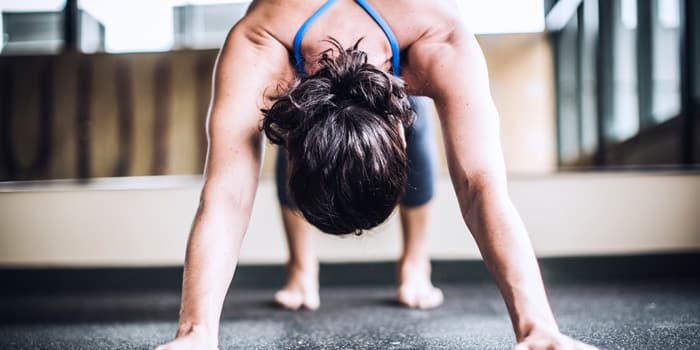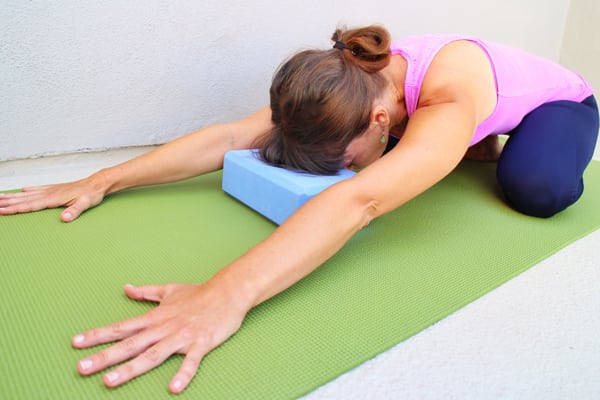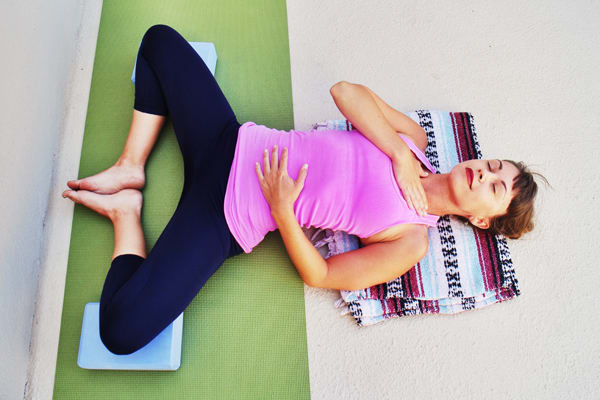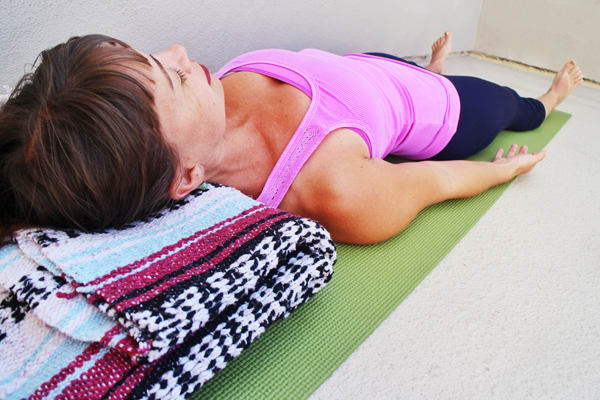5 Types of Restorative Yoga To Relieve Your Muscles

Is it just me, or do we live in a world that’s getting faster by the minute? We’re lazy and unproductive if we take longer than 30-minute lunch breaks. And results are only results if they happen now.
I’m not telling you to stop. If you want to go, then go—but sometimes, it might work to your benefit to go slower. That’s where restorative yoga can help.
Most forms of yoga have some restorative benefit. But there are a few forms that focus almost exclusively on this, benefiting you in ways your more demanding workouts generally don’t.
According to Dr. Timothy McCall, author of Yoga as Medicine, when restorative yoga is practiced regularly, it can lower your blood pressure, slow your heart rate, heal your muscles, and calm your mind. Here are 5 types of restorative yoga that may appeal to you.
1. Yin Yoga
Yin Yoga is based on the Taoist concept of Yin and Yang. Yang representing activity, invigoration, and motion, Yin is the opposite, representing passivity, calmness, and stillness.
Yin yoga restores and stretches out the connective tissues in your body, and has similar effects as deep tissue massage. It does so by asking you to hold certain asanas (yoga postures) for as short as three minutes and as long as twenty minutes.
Props including blocks, blankets, and straps are used to start you in the asana. As you sit in the pose, you relax, the muscles stretch and your body begins to work on restoring your ligaments, tendons, and joints.
Eventually in the stretch, the props can be removed to take you deeper. This dramatically increases your level of flexibility and strengthens the skeletal system, which can help ward off injuries.
Each class is typically 90 minutes, allowing for plenty of time to relax into the poses.
2. Chair Yoga
Due to the rise of popularity in yoga, new forms are popping up left and right. Some are ridiculous, others are innovative. The latter includes Chair Yoga, a mild, calming form that uses a chair to support you through each asana and allows anyone to gain the benefits of a consistent yoga practice.
By using a chair as a prop, you can get the same workout that a yogi gets on a mat but without the challenges that a non-supported pose offers.
Chair Yoga is ideal for those who are recovering from injury; it supports the body and targets specific vulnerable areas in need of stretching, strengthening, and healing.
3. Thai Yoga Massage
What could be more restorative and relaxing than pairing yoga and massage?
Thai Yoga Massage is an ancient practice out of India, Southeast Asia, and China that is based on the belief that invisible lines of energy run through the body.
When a person is injured, stressed, or over-stimulated, these lines of energy called “Lom” become blocked. When the energy lines are blocked, the body becomes out of balance, which eventually causes illness, pain, and a worried mind.
The goal here is to clear these lines of energy and heal the body using the hands as a conduit. This practice is called “Sen.”
Thai Yoga Massage is done one-on-one on a mat, towel, or firm mattress. The client lies on the ground while the practitioner places the person in particular asanas, placing pressure on any of the 10 main lines of energy through out the body, stimulating these centers and freeing up that energy. The result is that the client reaches a state of complete relaxation and clarity of mind.
4. Viniyoga
When dealing with injury, it is important to take a personal approach in your yoga practice.
Viniyoga was developed by legendary Indian yogi Krishnamacharya and carried on into America by Gary Kraftsow, and is based on the relationship of the teacher and student.
Each student is given a customized practice typically including asanas, pranayama (breathing exercises), chanting, and meditation. Poses are held for several breaths while the teacher ensures that the student is properly aligned.
This type of yoga is ideal for those who are recovering from injury or have physical limitations because it is adaptable to any and all.
5. Iyengar Yoga
The yoga created by B.K.S. Iyengar focuses on proper alignment and often uses props such as blankets, bolsters, straps, blocks, and even chairs to place you in that perfect posture. It is considered a form of Hatha yoga but there is very little flow in the practice.
Poses are held for several breaths once alignment is perfect. The student then rests for several breaths before entering into another.
It can begin as a very easy class but with regular practice one intensifies the postures by removing props and holding poses longer.
Interested in trying out some restorative yoga? Here are three easy poses to begin with.
1. Child’s Pose (Balasana)
If you’ve had a stressful day or you are taking a quick break from rigorous yoga practice, child’s pose is ideal.
Begin on your hands and knees. Spread your knees out further than your hips, and bring your feet together so their inside edges touch or come close to touching. Sit back so that your bottom rests on your heels. Allow your belly to relax between your thighs. Reach your arms out straight in front of you and place your forehead on the floor on a blanket.
This pose increases blood flow to the brain, lowers your blood pressure, and relaxes your mind. It also stretches your hips, pelvic cavity, legs, and back.
Spend several minutes in this pose for full body restoration.

2. Reclining Goddess (Supta Baddha Konasana)
For this relaxing pose, lie on your back and rest your head on the floor or on a blanket. Bend your knees and walk your feet in. Splay your knees open while keeping your feet pressed together along the outside edge.
If the stretch feels too deep, you can place blocks or blankets under your knees for support.
Rest the arms beside you or place your hands on your belly. Feel yourself breathe.
Reclining Goddess stretches your inner thighs, groin, and hips. Stay in this pose for several minutes for restorative benefits.

3. Corpse Pose (Savasana)
Sleep restores us inside and out. Similarly, you can get quite a few restorative benefits relaxing in this pose while awake.
Lie down flat on your back. Place your arms away from your torso, and turn your palms face up. Separate your legs so they’re comfortable but aren’t touching. Close your eyes, part your teeth, and rest your tongue on the roof of your mouth.
Take several deep, conscious breaths, and allow your mind and body to quiet down and relax. Your heart rate should slow, your blood pressure should decrease, and your muscles should unwind.

For more soothing yoga poses, check out Beachbody’s video series 3 Week Yoga Retreat where four yoga experts guide you through the foundations of yoga.
All photos by Lulu Lam.
